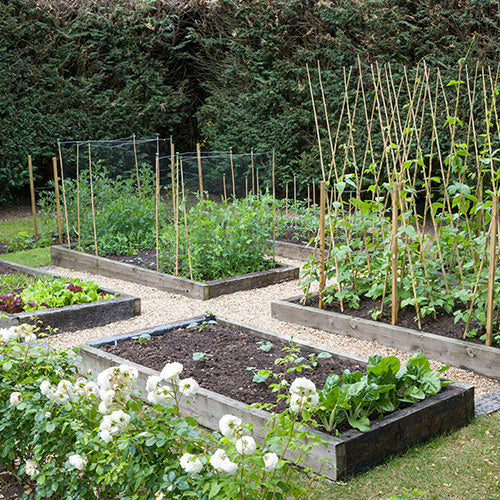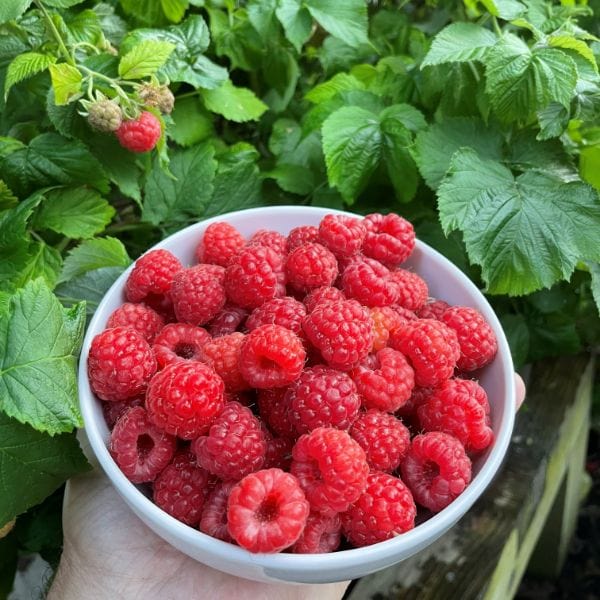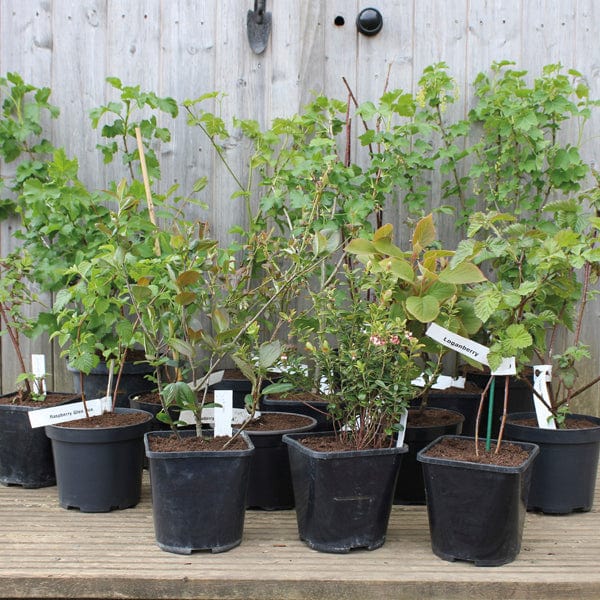
Product Description
Named after grower Rudolph Boysen, the boysenberry is a cross between a blackberry, dewberry, loganberry, and raspberry. This rather unique fruit plant, which was first bred in the 1920s, offers a truly delightful flavour reminiscent of the wild blackberry.
This thornless selection produces large, round, or oblong boysenberries with a distinctive purplish-black colour - a great addition to any garden or allotment. These luscious hybrid berry plants are perfect for puddings, crumbles, and cakes. They're also ideal for jams and preserves, allowing you to savour their unique flavour throughout the year.
Grown in 2-litre pots, our thornless boysenberry plants are approximately a year older than standard 9cm potted varieties. This larger pot size provides ample room for the root system to flourish, enabling it to absorb nutrients more effectively. As a result, you can expect a stronger, healthier boysenberry plant that yields an abundant harvest of these exquisite berries.
Product Details
Key Features
 Unique fruit
Unique fruit  Versatile for use
Versatile for use  Distinct flavour
Distinct flavour Vigorous growers
Vigorous growers
Planting & Harvesting
- Sow Indoors
- Sow/Plant Outside
- Flowers/Harvest
Delivery & Returns
Looking for a hassle-free way to get your gardening essentials? Look no further than DT Brown!
We know how important your garden is to you, and want you to be able to stock up on everything you need.
All our delivery charges will automatically appear in your shopping basket.
- Orders for seed only will incur a £2.45 delivery charge
- Orders for non-seed items will incur a £4.95 delivery charge
- A combined order (e.g. seeds and plants) will incur a £7.35 delivery charge.
FAQs
How to Grow Boysenberries
What Is a Boysenberry?
Are Boysenberries and Blackberries the Same?
Related Articles

D.T. Brown's Allotment Layout Ideas: How to Plan and Start Your First Plot
Whether you’re about to get started with a new allotment and are looking for a beginner’s allotment plan, or you just want to change the layout of your existing one, making a plan is the best way to make sure you don’t forget anything crucial. Below, we outline why a plan is necessary and explain the various things you should include when learning how to start and plan an allotment.







 Unique fruit
Unique fruit 
